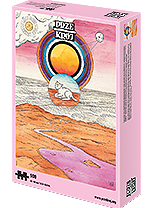
The colour yellow is central to Taoist cosmogony – it brings happiness and for centuries has been considered the colour of the emperor. At the same time, it connotes death and decline… How did the Chinese manage to contain so many different meanings in a single colour?
In the year 2500 BCE, one of the five legendary Chinese emperors ruled in the Yellow River Delta: the Yellow Emperor. He was the one that laid the groundwork for the development of the entire civilization. In addition to the basic methods of traditional Chinese medicine, he also invented the potter’s wheel, writing and mathematics. From that point onwards, the country established in the meanders of the Yellow River grew in power, while its culture flourished… It is true that there is no evidence to support this story, but it can be clearly seen that the colour yellow is of prime importance for the Chinese. For many centuries, it was reserved for the emperor and represented good fortune. But, as it turns out, it has its darker side, too.
Let’s first look at the hierarchy of colours. The Chinese divided them into two groups: basic (zhengse) and intermediary (jianse) colours. The former hold positive associations, while the latter hold negative ones. Traditionally, the Chinese recognize five basic colours: bai (white), hei (black), chi (red), qing (green-blue, dark blue) and huang (yellow). Their shared name is wucai. To better understand the symbolic








